MXA RACE TEST: THE REAL TEST OF THE 2021 YAMAHA YZ250F
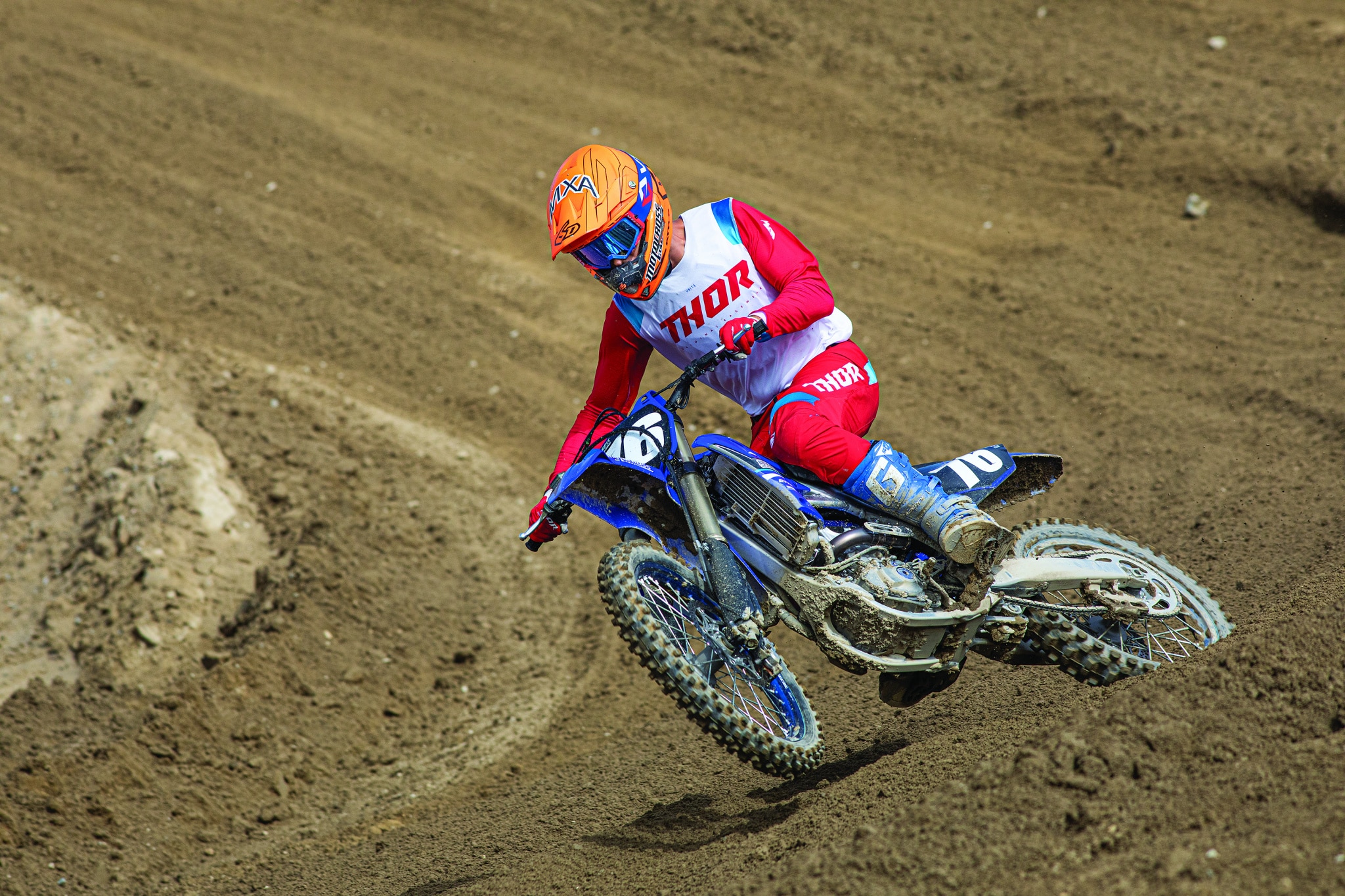
Q: FIRST AND FOREMOST, IS THE 2021 YAMAHA YZ250F BETTER THAN THE 2020 YZ250F?
A: Even though the 2021 YZ250F looks very similar to the 2020 YZ250F, the two bikes are very different from each other. You could say that the 2021 YZ250F is all new, just as the 2020 YZ450F was last year; however, we are dumbfounded as to why a new model looks so similar to its predecessor. Consumers want something that can be recognized as different from the previous year. Case in point: the 2021 CRF450. Riders are throwing down their cold-hard cash on the red bike based solely on its good looks.
The YZ250F has been a good-selling bike in the Yamaha lineup for many years now. Maybe the sales department is afraid that making it look too different would throw the baby out with the bathwater. The YZ250F has much greater sales numbers than the YZ450F. How do we know? Just go to your local track and see what everyone is riding. The YZ450F is an unorthodox design. From its backward-angled engine to it gas-tank-mounted airbox, the YZ450F has trod its own path. Yet, for some reason, the YZ250F has the same unique features, but consumers aren’t put off by the YZ250F’s off-the-beaten-path design cues. The biggest difference between the YZ250F and YZ450F is the moving mass. The heavier inertia of the YZ450F’s engine has caused some quirky handling traits in the past; those kinds of things stick in people’s minds, even when they aren’t true anymore. The Yamaha YZ250F has proved that daring to be different can work, because the bike works.
For 2021, Yamaha passed down the YZ450F chassis to the smaller YZ250F and reworked the engine in an effort to reel in the competition. In 2020, the YZ250F placed second in “MXA’s 250 Four-Stroke Shootout.” It was no slouch. For 2021, Yamaha cleaned up the handling, massaged the forks to ride higher in their stroke and bolted in a more powerful engine. The question is, was it enough to hunt down last year’s 250 shootout winner, the KTM 250SXF?
Q: WHAT CHANGES DID YAMAHA MAKE TO THE YZ250F FOR THE 2021 MODEL YEAR?
A: Many of the updates to the 2021 YZ250F were hand-me-downs from last year’s YZ450F. The two blue bikes share the chassis, lighter footpegs, updated brake calipers, brake rotors and top triple clamps, among other things. As for the engine, Yamaha’s engineers made a boatload of mods to improve performance and durability. Here is what Yamaha updated to produce more pony power while maintaining the bike’s reputation for durability.
(1) Intake port. The shape of the intake port is straighter and 3mm wider. The port volume was increased by 9 percent and the flow rate by .05 liters per second. Also noteworthy is that the valve guides were lengthened from 29mm to 33mm.
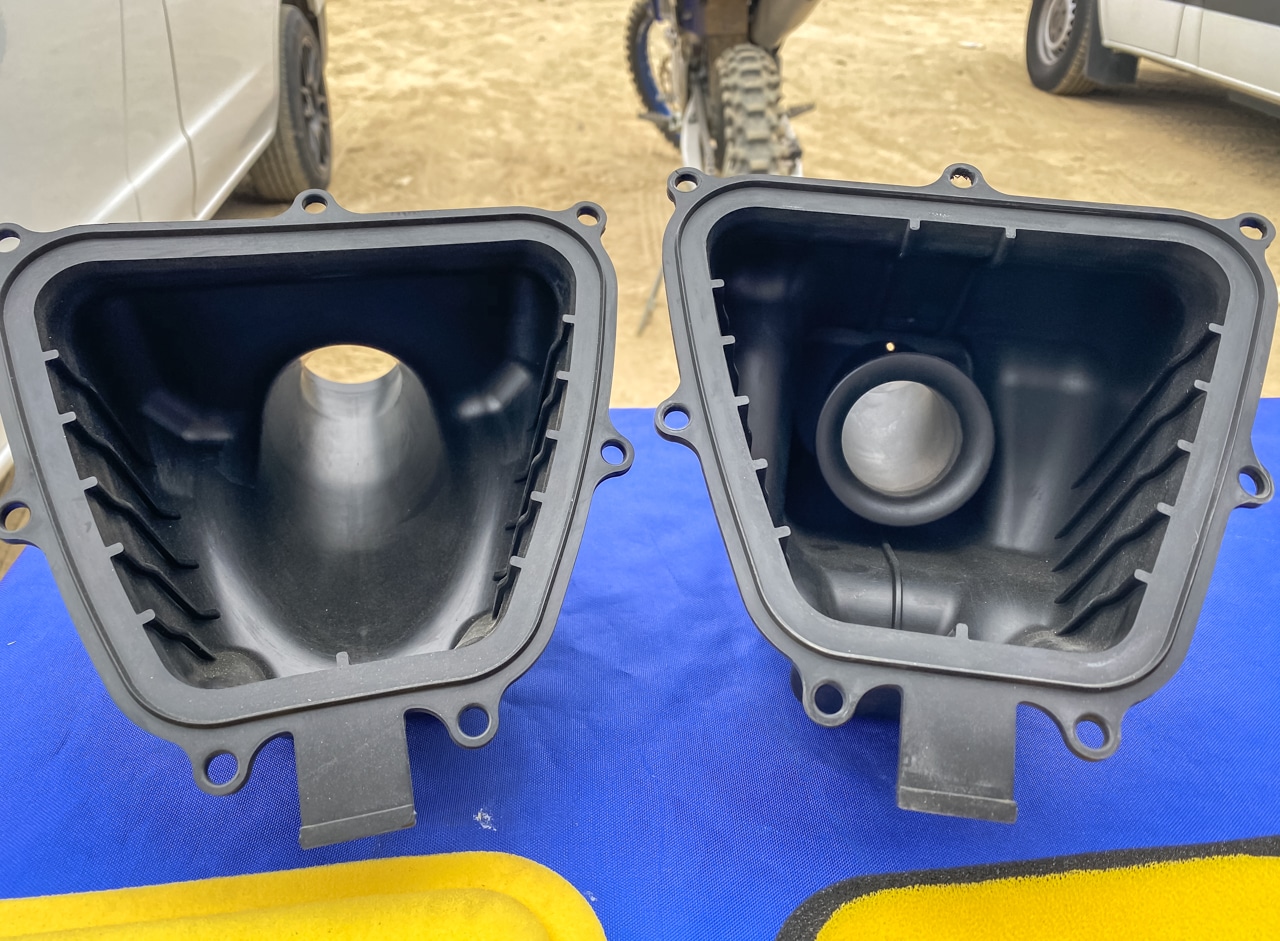 The 2021 YZ250F intake boot and velocity stack is on the left.
The 2021 YZ250F intake boot and velocity stack is on the left.
(2) Air intake system. There were four changes made to the intake system: (a) The throttle body joint had to be enlarged to match the updated port shape. (b) The velocity stack was removed from the airbox and is reshaped to maximize flow. (c) The air filter material has been changed. (d) The airbox lid now has ducts that exit under the seat to increase airflow going into the engine.
(3) Exhaust camshaft. The working angle of the camshaft has been reduced by 8 degrees, and the lobe center has been increased by 5 degrees. With that, the valve lift was reduced 0.3mm.
(4) Muffler. The muffler was lengthened 70mm, which increased the volume by 340cc.
(5) ECU setting. The standard ECU settings have been updated for the change in engine characteristics.
(6) Water pump. In the past, we have heard of the YZ250F having issues with the water pump. For 2021, Yamaha addressed those issues by making three changes: (a) Increasing the size of the six pressure relief holes on the impeller. (b) Increasing the lip tension on the oil seal. (c) Hard nitrate coating the impeller shaft.
(7) Temperature sensor. To prevent terminal wear on the water temperature sensor that sits on the right side of the cylinder head, a rubber holder was utilized.
(8) Cam chain. A new surface treatment was added to the inner plates of the cam chain.
(9) Cam chain tensioner. The compression spring tension was increased on the cam tensioner to match the new exhaust camshaft profile.
(10) Clutch basket. The YZ250F has been known to have the best cable clutch in its class, and Yamaha wants to keep it that way. Material was added to the outer edge of the clutch basket to reduce stress.
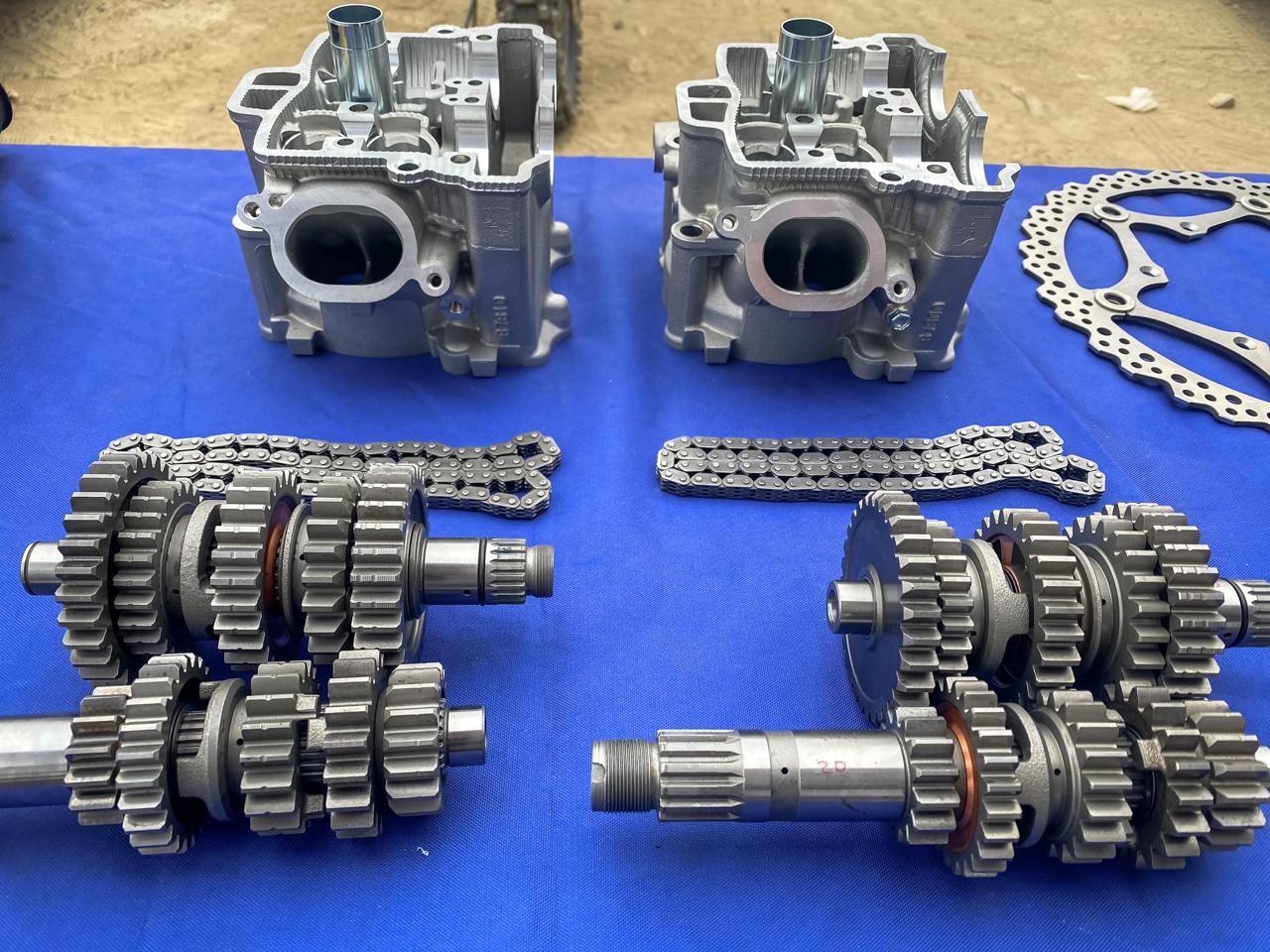 The beefed-up gears in the 2021 gearbox are visible on the left.
The beefed-up gears in the 2021 gearbox are visible on the left.
(11) Transmission gears. The gear ratio has remained the same for 2021; however, third, fourth and fifth gears have been widened to improve durability. The last few years, Supercross riders have broken third and fourth gear through the whoops. Yamaha addressed the issue by widening the affected gears.
(12) Crankcase. The case mating surface area was increased, allowing another fastener to be added.
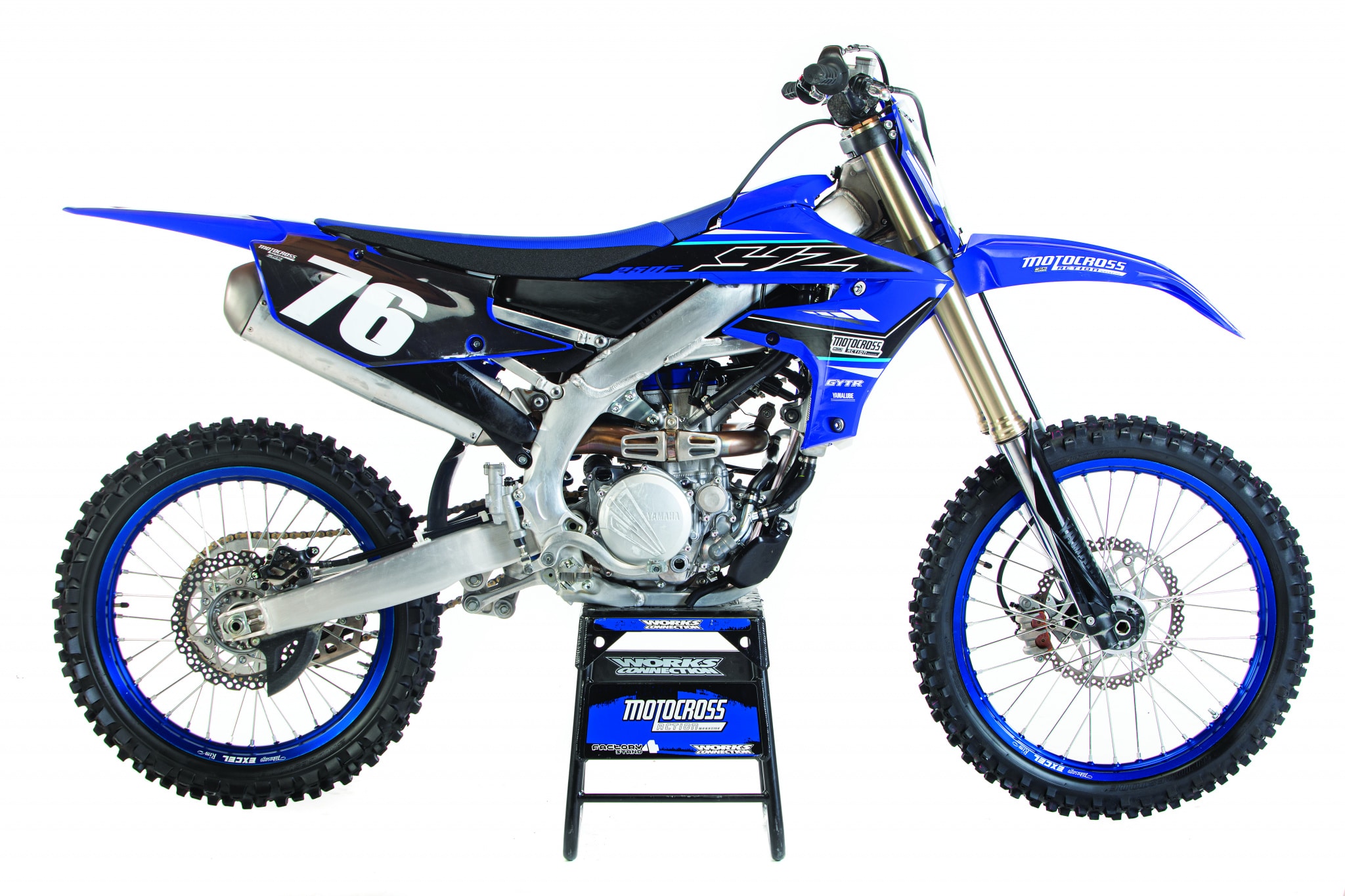 The 2021 Yamaha YZ250F may look very much like last year’s model, but believe us, it is very different.
The 2021 Yamaha YZ250F may look very much like last year’s model, but believe us, it is very different.
Q: HOW DID THE ENGINE CHANGES AFFECT THE PERFORMANCE OF THE ENGINE?
A: On the track and on the dyno, we got totally different readings using the two preprogrammed ECU maps. The dyno indicated that the power had been improved from the mid to top end, keeping the low to mid power in the same ballpark as last year’s YZ250F. Test riders could feel how much faster the 2021 YZ250F revved, and just by revving the bike on the stand you could feel how much faster the engine turned over. When you rode the bike through the pits and blipped the throttle, the bike would launch forward. The engine felt exciting before we ever got on the track.
On the track, the YZ250F revved through its rpm range with authority, but test riders had to grab the next gear rather quickly or it would fall on its face. In the corners, the YZ250F surged forward with power. This surge was, at times, hard to control with the throttle. You had to have a very steady right wrist to manage the rush of power on corner exit. This rush of power at the crack of the throttle may sound troublesome, but it is good for two reasons. (a) Once you exit the corner, the powerful engine shotguns you forward. (b) Detuning an engine is much easier than trying to make it faster, especially when the YZ250F has a free-and-easy WiFi mapping app.
It is true that most of our test riders loved the exciting, free-revving grunt down low, even if it was harder to control. The engine was very snappy on corner exit, then it revved through the rpm range at the speed of light before you could even think about getting a shift in. And, this is a bike that you must shift once you hit the upper echelons of the rpm range. Why? Because you can’t be lazy and not shift at peak like you can on the KTM 250SXF, Husky FC250 or the Kawasaki KX250.
That doesn’t sound like a big price to pay for more power, but sometimes we like to be lazy. We think Yamaha should have widened the gaps between gears, because our right foot got tired. The shift points were in awkward places, and there were too many of them. We’ll stop whining about how much we didn’t like the 2021 YZ250F’s more powerful engine, because it is easy enough to shove a rag in the airbox to tone it down. Don’t try that, though, unless you don’t own a smartphone to remap the powerband.
 The SSS Kayaba forks hold up better in the stroke without sacrificing plushness.
The SSS Kayaba forks hold up better in the stroke without sacrificing plushness.
Q: WHY IS THE YAMAHA MAPPING TOOL SO IMPORTANT TO LEARN HOW TO USE?
A: Because Yamaha’s stock maps are too aggressive down low and offer nothing to rave about on top. Due to the engine mods and the opening up of the airbox, the engine revs up much faster than the engine in the 2020 model. This is why the improved mid to top-end power feels more like low-to-mid power on the track. When riders rode the 2020 YZ250F and 2021 YZ250F back-to-back, many MXA test riders liked the super-smooth power of the 2020 model over the abrupt driving force of the 2021 model. The stock map on the 2021 YZ250F is optimal for a track that you never get out of third gear on. The tighter the better.
When asked what they wanted from the 2021 YZ250F powerband, MXA test riders said, “The power profile of the 2020 YZ250F but with more top-end and over-rev.” Yamaha technicians said that they had a map that did just that. What did Yamaha suggest we do to the mapping? (1) Decrease the fuel at 6500 rpm and increase it from 10,000 to 12,000 rpm. (2) On the ignition map, they wanted us to retard the ignition timing throughout the entire rpm range. This broadened the power without damping its exciting feel. This map worked great for our more experienced and faster testers, but they still had to put in a valiant effort to get their shift points and corner exits right. We asked the Yamaha techs to calm the power down off the bottom so the power would gradually ramp up for an ultra-smooth pull. The map they gave us had even less fuel from 4500 to 11,500 rpm and more ignition retardation from 4000 to 10,000 rpm. This map offered a feel very close to that of the 2020 YZ250F with a tad more oomph. Our Vet and slower test riders were happy with this map. Yamaha said that they could mute the engine even more if we wanted, but we were in sync with the two new maps (maps shown on next page).
Yamaha’s WiFi Power Tuner is the most versatile ECU tool on the market. Plus, it is free. Strangely, very few YZ250F or YZ450F owners actually avail themselves of what the Power Tuner can do. Why? It is too complicated for the average Joe. To make the most of any ECU mapping tool, you need to understand what those 32 boxes mean and how to arrange them in a way that achieves the desired power you are looking for. Why are we giving Yamaha a hard time? Because they are leading the ECU charge and thus have the burden of seeking perfection.
So what do we suggest? When we tell Yamaha we want more top-end or less low-end surge, they can plug in the numbers and achieve what we are looking for, but lots of the changes that pay the biggest dividends are counterintuitive. Instead of 16 square boxes to input fuel and ignition timing, there should be simple single click options such as “less” or “more low end‚ “more” or “less over-rev‚“ and “more overall” or “less overall” power. Wouldn’t that make things less complicated for the average user? The goal isn’t to have a high-tech mapping system, it is to get people to actually use it.

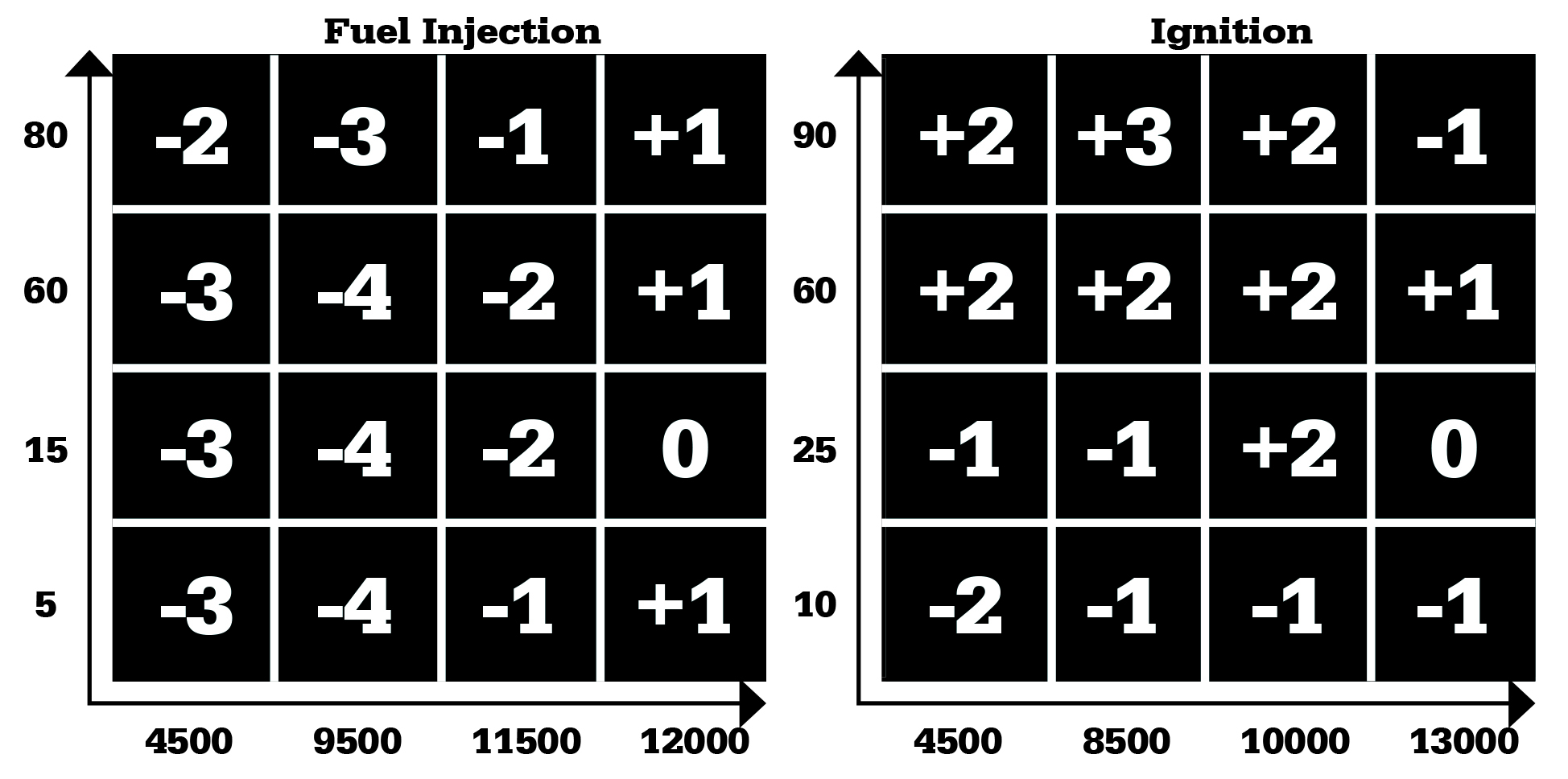
Q: HOW DOES THE YZ250F HANDLE COMPARED TO THE 2020 MODEL?
A: The frame geometry of the YZ250F is unchanged for 2021. That doesn’t mean that there weren’t changes that affected the YZ250F’s handling characteristics. The 2021 chassis felt like it had less flex from the middle to the rear of the bike. We had mixed emotions at first, as we had grown accustomed to the loose feel of the 2020 YZ250F. The 2020 YZ250F delivered more movement underneath you, but in a manner that was very predictable. As testers got familiar with the new 2021 model, they realized that the increased rigidity of the back half of the YZ250F chassis was more consistent everywhere on the track. What was most noticeable was that it tracked straight as an arrow.
Although you still have to work a little harder to get the YZ250F into a corner, especially in comparison to the Husky FC250 and KTM 250SXF, what we do like about the YZ250F is that once into a corner, the input needed to keep it there is minimal. Be forewarned, however, that you must think ahead to set up your line into the corner. From a racer’s perspective, we prefer a more natural-turning bike, which isn’t the 2021 YZ250F.
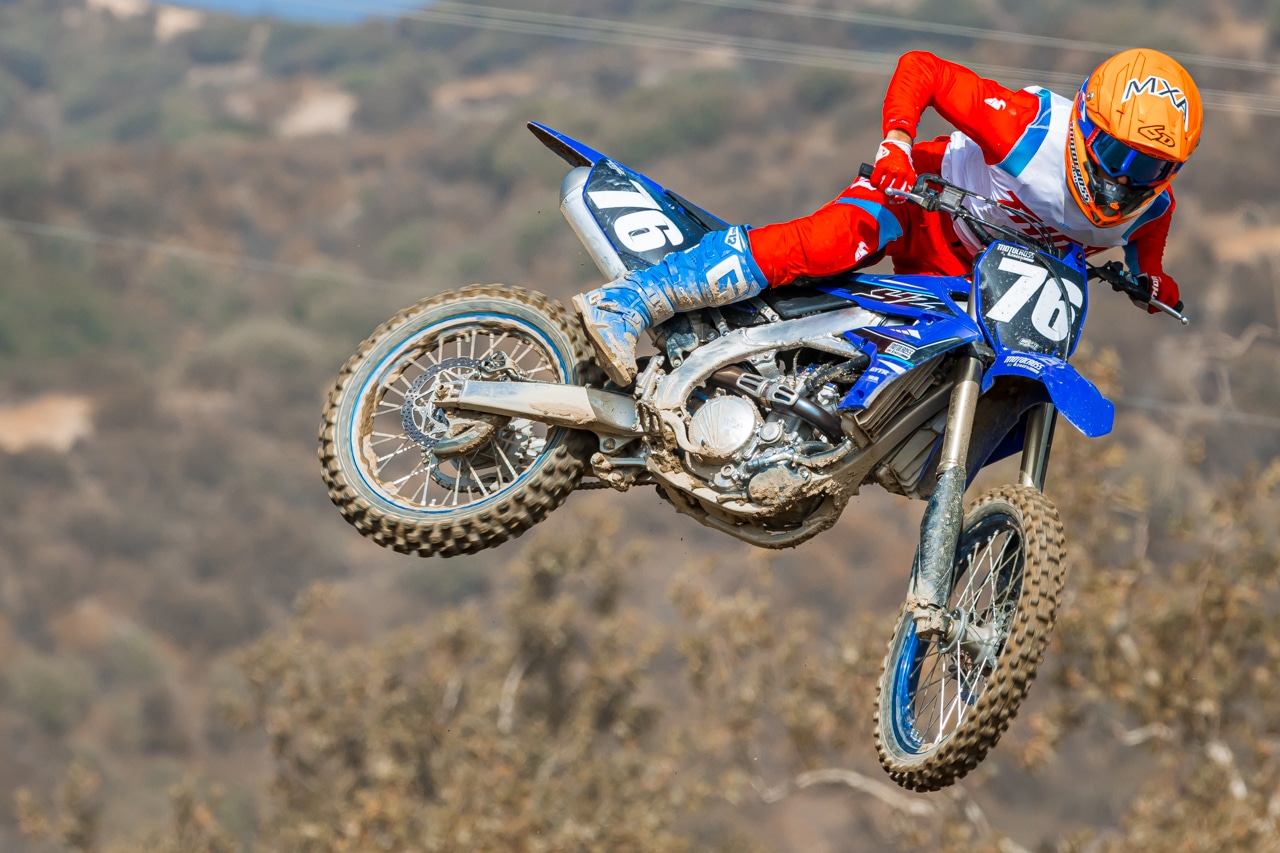 The YZ250F is better than its predecessor in many ways. It offers an improved engine package, racier suspension components, stronger brakes and a more Pro-level feel for 2021..
The YZ250F is better than its predecessor in many ways. It offers an improved engine package, racier suspension components, stronger brakes and a more Pro-level feel for 2021..
Q: HOW CAN THE KAYABA SSS COMPONENTS KEEP GETTING BETTER AND BETTER EACH YEAR?
A: It’s not easy, we will tell you that much. Many of the other manufacturers flounder trying to find the holy grail of suspension settings, but each year Yamaha seems to outdo itself. Just about anyone of any skill level or weight can jump on a YZ125, YZ250, YZ250F or YZ450F and feel at home with the suspension right away. It is dummy proof, and we love that. Yamaha makes it easier to find a good suspension setting than any other brand.
For 2021, Yamaha made its Kayaba SSS forks ride higher in their stroke. This is more of a racer preference rather than to control fore-and-aft pitch. It adds stability to the ride. We admit that it does take away some of the comfort that slower weekend warriors want, but that is the difference between a race bike and play bike. The ramp-up of the SSS fork’s compression curve is more aggressive than before. It not exactly harsh, but it’s not exactly plush either. Our Pro test riders liked this feel, but the rest of our test riders wanted more follow-through and fluidity. We ended up going six clicks softer to achieve the plush feel they were looking for.
As for the shock, we almost forgot about it because there was really nothing to complain about. Faster riders went a few clicks stiffer on compression and an eighth of a turn in on high-speed compression. This is a great shock.
Q: WHAT DID WE HATE?
A: The hate list:
(1) Rear fender. When putting the bike up on the stand by the rear fender, the fender feels as if it is going to break off. It needs to be reinforced.
(2) Weight. If the YZ250F wants to be the best in class, it needs to go on a serious diet.
(3) Width. The bike is bulky and wide. Testers don’t mind it until they jump on the much slimmer competition.
(4) Top end. The 2021 Yamaha is more powerful on top than it was, but the green, white and orange bikes blow by it on fast straights.
(5) Clutch. This is the best cable clutch on the market; however, it only has the CRF250 and RM-Z250 to compete against. The more powerful engine heated up the clutch more. We had to adjust the free play constantly. Yamaha needs to switch to hydraulics.
(6) Compression clickers. It is almost impossible to turn the fork’s compression clickers without stripping the adjustment screws. There is no room to get to the adjuster with the handlebars in the way.
(7) Maps. The two preprogrammed maps are too aggressive for the average rider. They need to offer one that is smooth and linear and one that hits hard and aggressive.
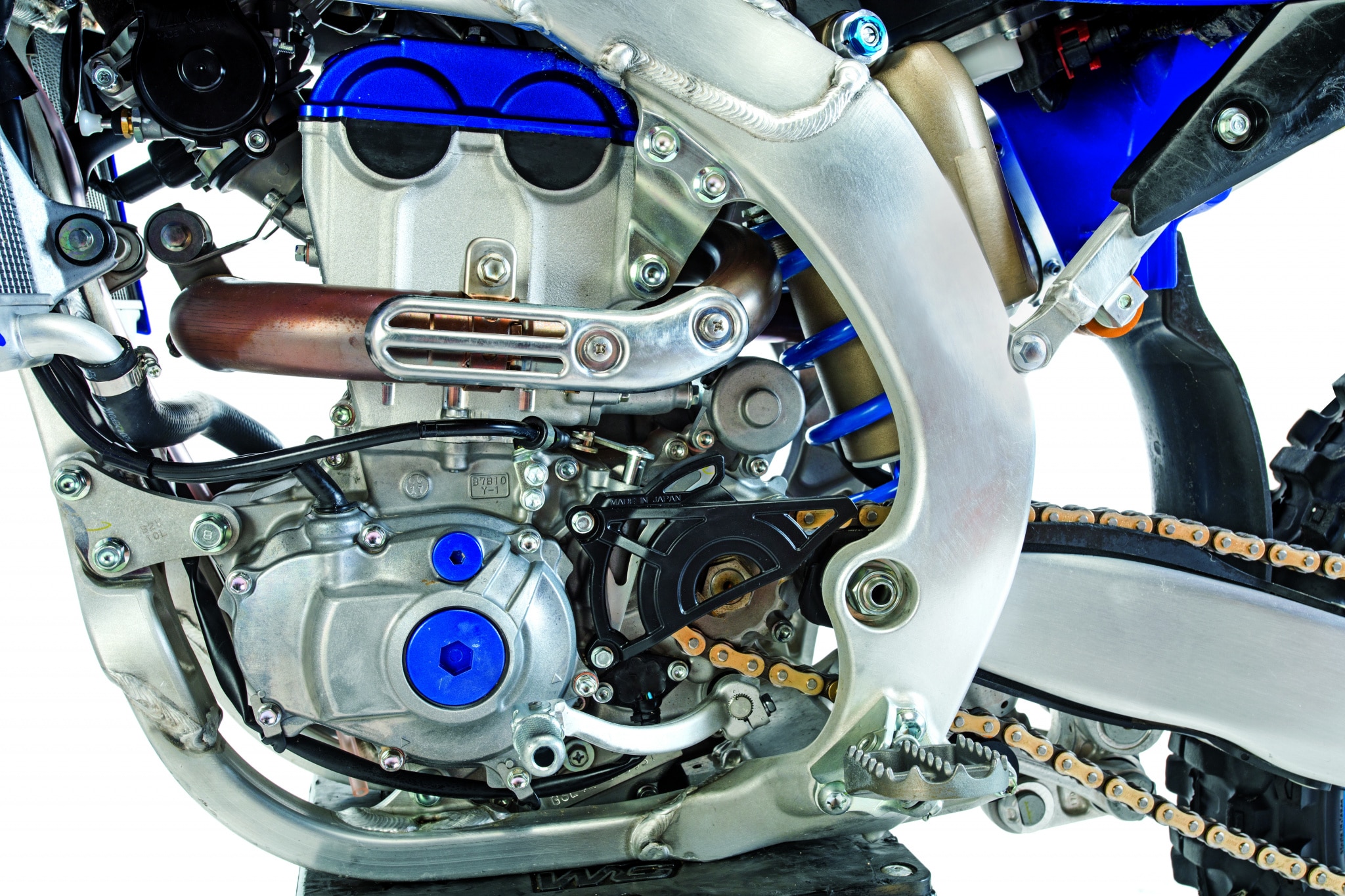 The YZ250F powerplant revs through its rpm range with authority due to its increased power and vented airbox cover.
The YZ250F powerplant revs through its rpm range with authority due to its increased power and vented airbox cover.
Q: WHAT DID WE LIKE?
A: The like list:
(1) Suspension. The Kayaba SSS forks hold up better in their stroke without giving up anything. The KYB shock is the bee’s knees.
(2) Brakes. The more rigid and more powerful front brake has less fade and offers a better feel at the lever.
(3) WiFi. The ability to tune the power curve with the WiFi Power Tuner app is awesome; however, we understand why riders find it daunting to use.
(4) Dual-mode map switch. Having the ability to switch maps mid moto is a great feature.
(5) Durability. Yamaha beefed up the transmission to handle the added power.
(6) Vents. The vents in the air filter cover allow the bike to breathe and get the engine moving faster.
(7) Traction. The changes to the chassis help the rear end to track like it’s glued to the track.
(8) Throttle response. With a blip of the throttle, the engine takes off.
Q: WHAT DO WE REALLY THINK?
A: The YZ250F is better than its predecessor in many ways. It offers an improved engine package, racier suspension components, stronger brakes and a more Pro-level feel for 2021. When it comes to the Yamaha YZ250F, we are no longer focusing on the oddness of the backward engine; we are talking about how and where the YZ250F powerplant produces its power. This is the only dedicated low-to-mid bike in the 250 class—if you don’t count the weak-sister Suzuki RM-Z250.
Honda and Kawasaki chose to chase after the high-revving, 14,000-rpm KTM 250SXF power profile. Was that the right move to make? Yes, but only if you are better at it than KTM. Honda and Kawasaki aren’t better at it than KTM. Does the low-end YZ250F powerband have more to offer than the high fliers? We believe the YZ250F engine has a style of power that suits the masses. It has the proper power profile for a Novice, Vet or casual racer. If you are looking for a bike that has great bottom and plentiful top, you won’t find it at Kawasaki, Honda, Suzuki or Honda. Only the 2021 KTM 250SXF and Husqvarna FC250 offer the best of both worlds.
We love the YZ250F because of the superb suspension and stand-alone low-to-mid powerband. Everyone will feel comfortable faster on the YZ250F than they would on a KX250, RM-Z250, CRF250, 250SXF or FC250. It offers a homey feel.
MXA’S 2021 YAMAHA YZ250F SETUP SPECS
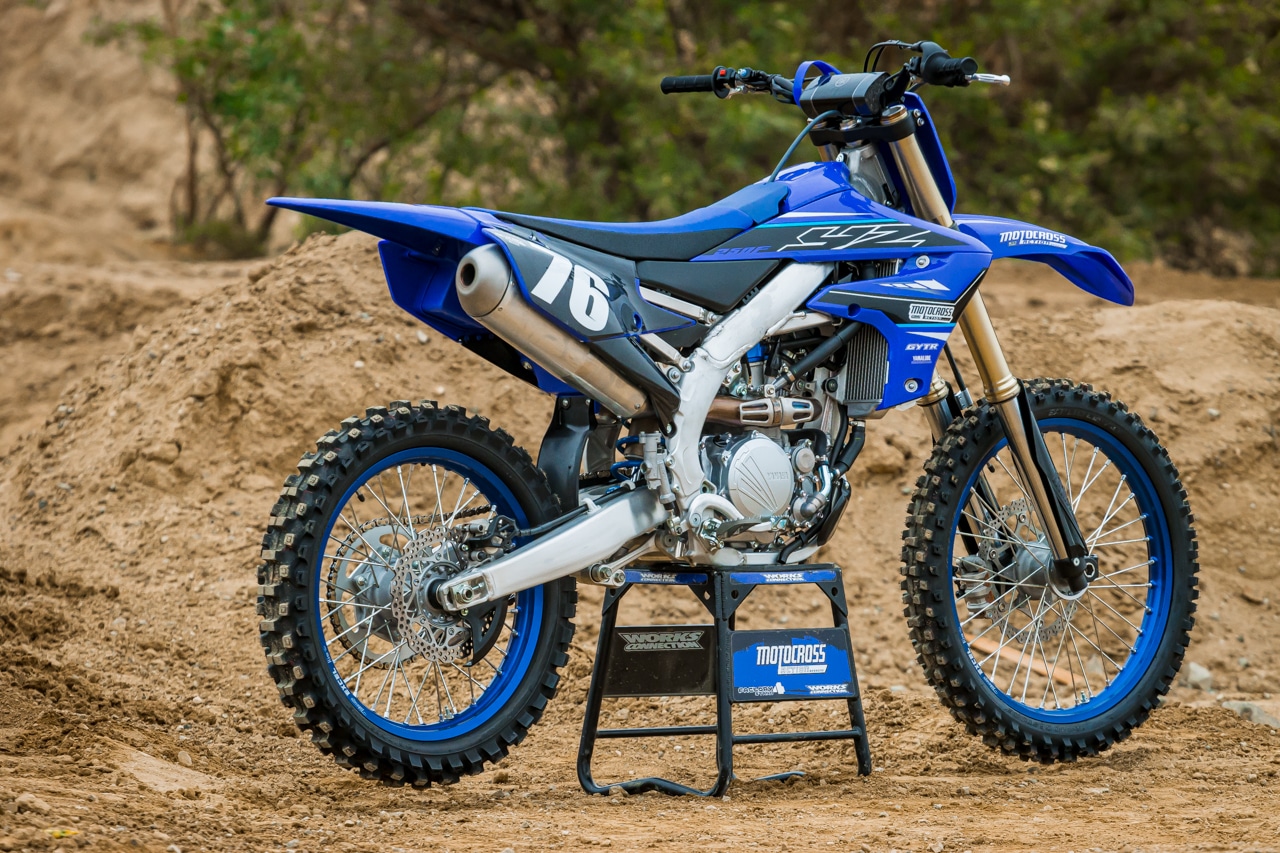 This is how we set up our 2021 Yamaha YZ250F for the track. We offer these settings to help steer you in the right direction.
This is how we set up our 2021 Yamaha YZ250F for the track. We offer these settings to help steer you in the right direction.
KAYABA SSS FORK SETTINGS
The 2021 Kayaba SSS forks are more tailored towards racers. They don’t dive and have improved bottoming resistance. The stock compression setting was too stiff for most of our test riders. We went six or more clicks out to increase the overall ride comfort. Faster riders kept the stiffer setting to lessen the pitching motion. For hardcore racing, we recommend this fork setup for the 2021 Yamaha YZ250F (stock specs are in parentheses):
Spring rate: 4.7 N/mm
Compression: 17 clicks out (11 clicks out)
Rebound: 11 clicks out (10 clicks out)
Fork-leg height: 7mm up
Notes: For lighter riders who aren’t using most of the travel, try going to the lighter 4.6 N/mm springs.
KAYABA SSS SHOCK SETTINGS
We loved this shock last year, and this year it is even better, as the wallowing we complained about is minimized with the stiffer torsional rigidity. Stock settings are in the ballpark for the majority of riders. Test riders are split between 103mm and 105mm of sag. For hardcore racing, we recommend this shock setup for the 2021 Yamaha YZ250F (stock specs are in parentheses):
Spring rate: 56 N/mm
Race sag: 105mm
Hi-compression: 7/8 of a turn out (1 turn out)
Lo-compression: 10 clicks out
Rebound: 10 clicks out
Notes: This is a stiffer spring than last year. If you have less than 30mm of free sag, think about going to a softer 55 N/mm spring rate. ο




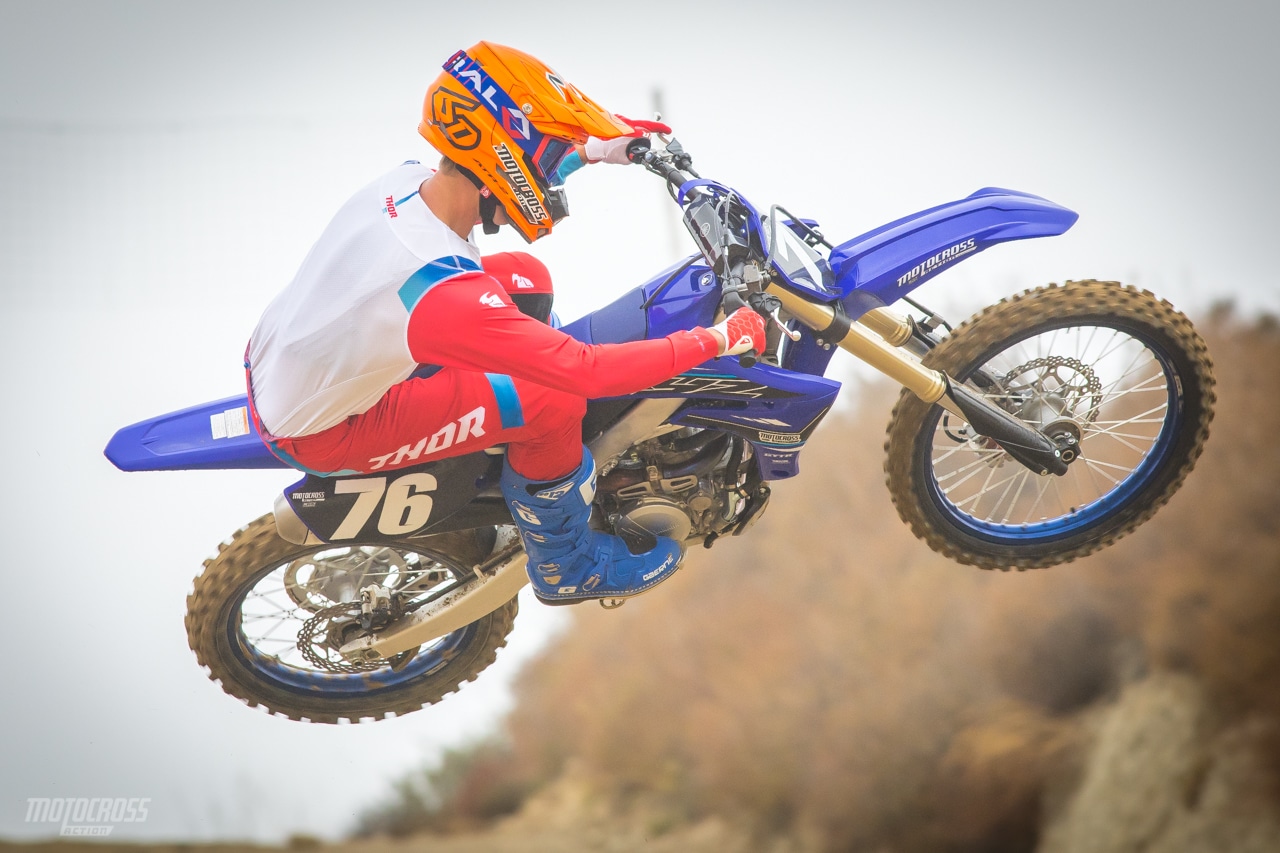



Comments are closed.